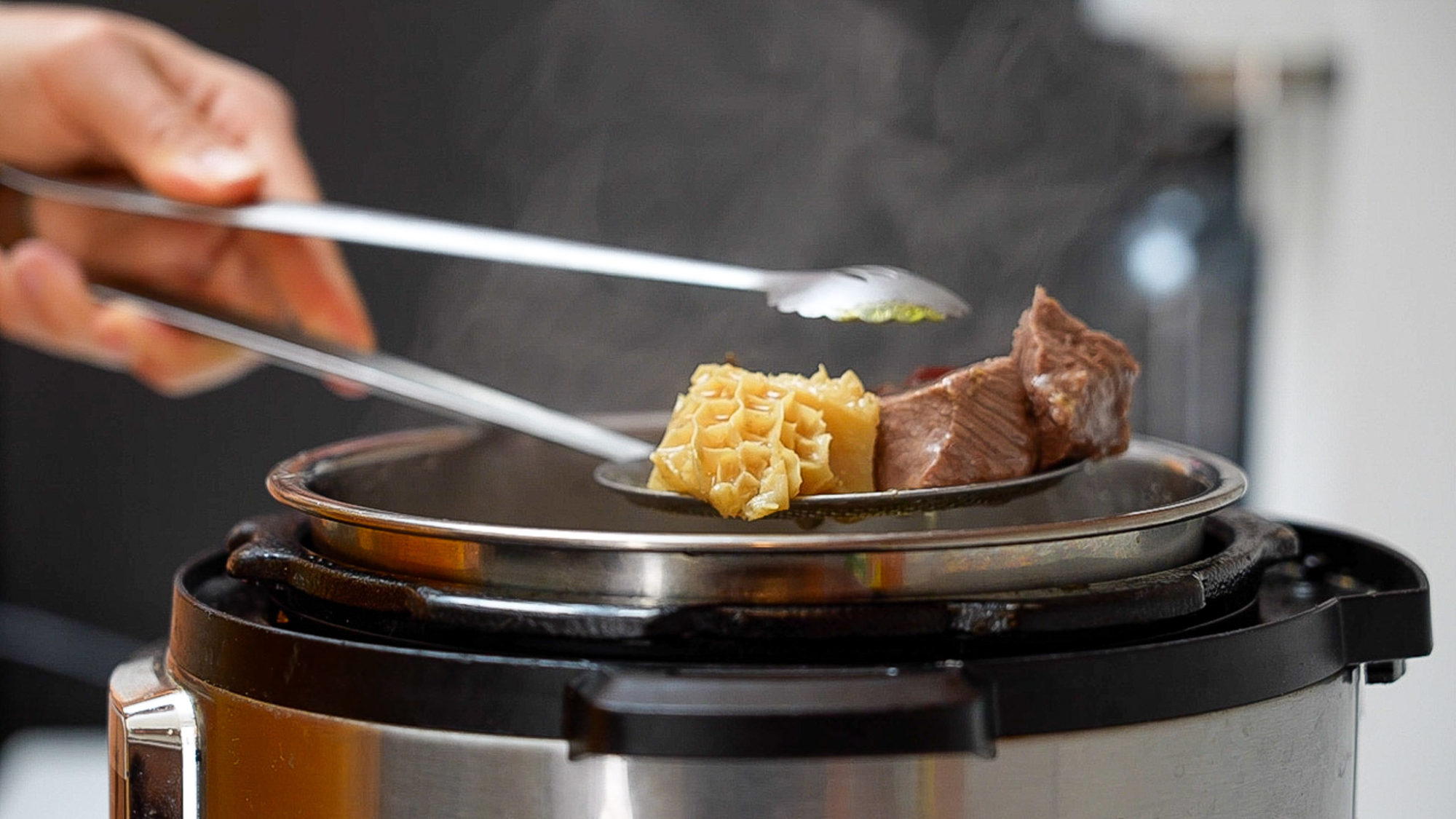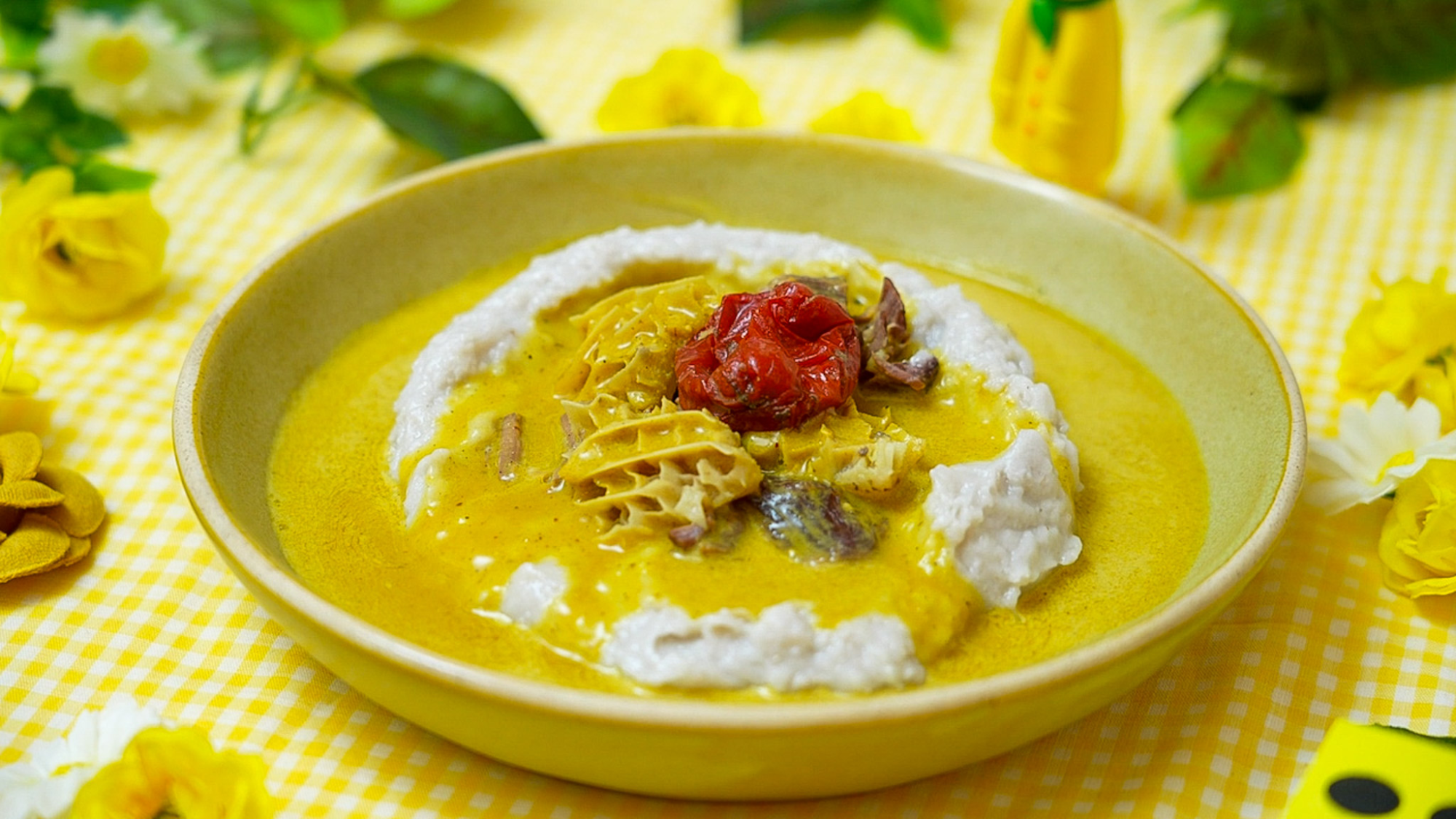Have you ever tasted a soup that feels like it’s telling you a story? Achu Soup does exactly that.
This bright, yellow dish comes from the hills of Cameroon and mixes smooth mashed cocoyams with a flavorful palm-oil broth.
But Achu Soup is more than food—it’s a link to the past. Moreover, families prepare it together during celebrations, passing the recipe from grandparents to grandchildren.
In this guide, you will learn about the significance in detail and how to make it easily.
Ready to learn more about this amazing dish?
Let’s dive in!
Origins & Cultural Significance of Achu Soup
A dish born from generations of culinary wisdom, passed down through families in the western regions of Cameroon. Achu Soup isn’t just food – it’s a living history lesson.
Originating from the Bamenda highlands, this dish represents the cultural identity of the Northwest region.
The story goes back generations, where local communities developed this special recipe as a way to celebrate gatherings, mark important events, and connect with their roots.
Each ingredient carries a piece of tradition, telling a story of courage, community, and shared experiences.
More than just a meal, Achu Soup is a social experience. In many Cameroonian communities, preparing this dish is a communal activity. Families and friends come together, with elder members teaching younger generations the art of preparation.
During celebrations, weddings, and important gatherings, Achu Soup takes center stage. It’s a symbol of hospitality, love, and connection.
When someone serves you Achu Soup, they are not just offering food – they’re sharing a piece of their heart and heritage.
How to Make Traditional Achu Soup

Key Ingredients in Achu Soup
- Yellow cocoyams (the star of the show)
- Special yellow soup made from palm oil
- Potash (a traditional ingredient that gives the soup its distinctive flavor)
- Spices that vary by family recipe
- An optional protein, like beef or fish
Each ingredient plays a crucial role. The yellow cocoyams provide a creamy base, while the palm oil soup adds a rich color and depth of flavor that makes this dish unforgettable.
Step 1: Peel and Cook the Yellow Cocoyams
- Rinse thoroughly to remove dirt.
- Then, carefully peel off the skins using a knife or vegetable peeler.
- Rinse again, then place in a large pot with water.
- Boil until the cocoyams are completely soft (about 45 minutes to 1 hour).
Step 2: Pound the Cocoyams into a Smooth Paste
- Use a wooden mortar and pestle.
- After that, pound the boiled cocoyams while still hot until smooth and stretchy.
- Aim for a consistent, lump-free paste with a slightly sticky texture.
Step 3: Prepare the Yellow Soup Base
- In a bowl, mix edible potash (kanwa) with warm water.
- Stir gently until dissolved. Let it sit, then pour off the clear liquid.
- Add red palm oil to the clear potash solution and stir quickly.
- Watch it turn into a beautiful, bright yellow emulsion — this is your soup base.
Step 4: Season with Local Spices and Meat
- Boil beef, cow skin (kanda), tripe, or smoked fish with salt, seasoning cubes, and pepper until tender.
- Pour some of the meat stock into the yellow soup and mix well.
- Add ground spices like Achu spice mix, white pepper, and country onions to give it that aroma.
Step 5: Serve It All Together
- Shape the pounded cocoyam into neat balls or portions and place them in a bowl.
- Ladle the hot yellow soup around it.
- Lastly, add your cooked meat pieces on top or around the edges.
What is the Nutritional Value of Achu Soup?
| Nutrient Source | Health Benefit |
|---|---|
| Cocoyams (complex carbs) | Provides long-lasting energy and supports digestive health. |
| Palm Oil (vitamins) | Rich in vitamins A and E, which support eye health and immunity. |
| Local Spices & Potash | Provide essential minerals like magnesium and potassium to support muscle and nerve function. |
| Meat/Fish (protein) | Helps build and repair body tissues, keeping you full and energized. |
Conclusion
Achu Soup is more than a recipe – it’s a path through culture, tradition, and community.
On top of that, if you are a food lover, a cultural enthusiast, or someone looking to find new culinary experiences, this dish has something special to offer.
Want to try making Achu Soup? We challenge you to give it a go!
Share your experience in the comments, or ask your friends and family about their own Achu Soup stories.
After all, food connects us in the most beautiful ways.







